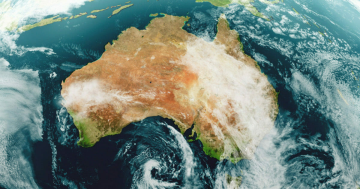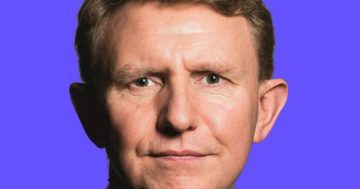Sharon Klyne* unpacks how Australian’ super assets have been shielded from the largest global fall in value since the Global Financial Crisis in 2007-08.
 Australia’s pension assets held steady in 2022, helped by the superannuation guarantee, strength of the local currency and a lower allocation to bonds amid a record annual fall in global pension assets according to a report by the Thinking Ahead Institute.
Australia’s pension assets held steady in 2022, helped by the superannuation guarantee, strength of the local currency and a lower allocation to bonds amid a record annual fall in global pension assets according to a report by the Thinking Ahead Institute.
In local currency terms, Australia pension assets grew 0.1 per cent CAGR (compound annual growth rate) to US$2.1 trillion ($3 trillion), compared to a 16.7 per cent plunge in global pension assets to US$47.9 trillion due to the volatility in global markets, the research shows.
The Thinking Ahead Institute is a not-for-profit think tank founded by consulting company Willis Towers Watson.
Commodity exports helped cushion the fall of the Australian dollar against the US dollar, compared to other currencies, Jonathan Grigg, investments director at Willis Towers Watson in Melbourne, tells Investment Magazine.
“Most currencies fell against the US dollar last year but because commodities were so in demand, countries that have quite a bit of commodity exports performed ok.
“We saw that in Australia with exports helping cushion it a bit compared to other currencies,” Grigg says.
Australia’s defined contribution market and strong bias towards equities were other factors that helped prevent a fallout.
“The other factor is it is a big defined contribution market here.
“Equities had a pretty bad year, and we have a lot of equities in our portfolios here, but we have less in bonds.
“Defined benefit markets performed quite poorly because bonds did badly,” he says, citing the UK as an example.
Having a significant allocation in alternatives and higher weighting in cash in Australia, particularly in retail and self-managed super funds compared to other markets, was another factor.
The top three largest pension markets – the US, Japan and Canada – account for over 76 per cent of the largest 22 markets globally.
The research also shows defined contribution schemes growing as countries shift away from defined benefit pensions.
In the last 20 years, defined contribution assets have grown 7.2 per cent annually, compared to a 4.4 per cent per annum growth rate in defined benefit assets.
Outlook
Going forward, Grigg expects some funds in Australia to rebalance their liquid assets either through actual sales or cash inflows.
Fund managers are finding it more challenging to raise capital to invest in unlisted assets as super funds already heavily overweight in the asset class.
“Those who are trying to raise capital for unlisted assets are finding it much harder to raise capital now than they have for quite some time, which makes sense given the denominator effect, and people are pretty well stocked,” he says.
“Australia’s GDP to superannuation assets is much higher than most places in the world and that’s leaving a lot of the really big funds to go offshore to find ways to differentiate themselves.
“I think private markets is somewhere where funds are looking at that finding differentiation.”
AustralianSuper already has a significant presence in London and New York and more recently, Aware Super announced plans to open an office in Europe.
*Sharon Klyne is Editor of Investment Magazine.
This article first appeared at investmentmagazine.com






